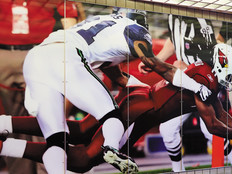A Drone for Every Small Business
Last June, the Federal Aviation Administration grounded Amazon PrimeAir’s plans for a drone delivery system. But two weeks before the Amazon decision, the FAA granted energy corporation BP permission to fly a drone over Alaska’s North Slope to better survey roads and pipelines. That marked the first condoned use of a commercial unmanned aircraft system (UAS) over U.S. soil and, as U.S. Transportation Secretary Anthony Foxx noted, “another important step toward broader commercial use of unmanned aircraft.”
Despite its reticence on UASs, the FAA is not blind to the demands and priorities of businesses. The agency’s ban applies only to commercial use, except in instances where a waiver is granted. Six such waivers were given to movie and television production companies in September.
Short of a waiver, however, the FAA Modernization and Reform Act of 2012 allows only for model aircraft, weighing 55 pounds or less, flown within line of sight for “hobby or recreation.”
The number of jobs expected to be created within the UAS industry in the first decade after full integration for commercial use
SOURCE: Association for Unmanned Vehicle Systems International, “AUVSI statement on the Announcement of Google’s Research into UAS Deliveries,” Aug. 28, 2014
Drones at Your Workplace
Does the FAA ban mean that drones remain verboten for small businesses? Well, yes and no.
Colin Snow, founder and CEO of Drone Analyst, says that while larger companies such as Amazon remain shackled, small businesses are leading the UAS charge, albeit in a somewhat gray area. “There are no laws that prevent you from actually using drones commercially,” Snow says, “but there are FAA policies. Most people hold back without there being laws in place, but many small businesses, between 2,000 and 3,000 according to the research I’ve done, are operating in Class G uncontrolled airspace, which is the airspace right above us.”
Snow says that those companies now engaging in commercial drone use — whether in a gray U.S. market or internationally, where UASs are more accepted — generally fall into six markets: precision agriculture; inspection and surveillance; mapping and surveying; film, photo and video production; public safety or emergency response; and environmental inspection and regulation. From examining irrigation lines to staring down a refinery flare stack, drones offer a superior way to see what needs to be seen, in less time and at less expense.
Snow says drones are evolving to fill even more sophisticated business roles. Whereas today’s uses focus on simple imaging, future applications will take a Big Data approach to analyzing footage.
“Photo and video are only part of the whole service offering,” he says. “It’s what you do with the data after you’ve captured it — the processing, storing and offering it up as useful, valuable information to somebody who’s, say, doing precision agriculture and wants to know the crop vigor of their field. There’s so much potential.”







